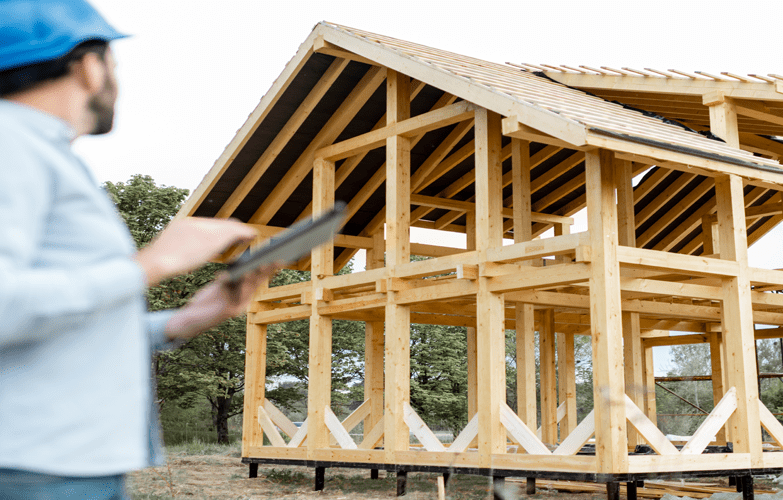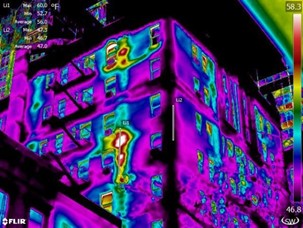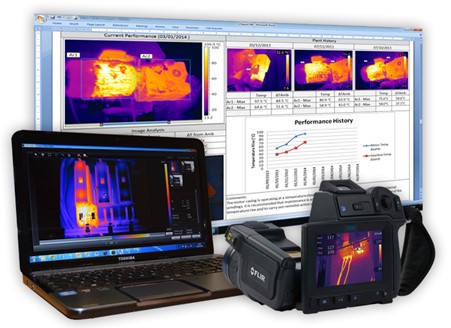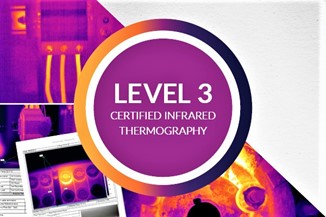Thermal Imaging Surveys to Achieve Extra BREEAM Credits
Thermal Imaging Surveys to Achieve Extra BREEAM Credits. It is easier than you think to gain extra BREEAM points on […]

Thermal Imaging Surveys to Achieve Extra BREEAM Credits.
It is easier than you think to gain extra BREEAM points on your project. Under the latest edition of the BREEAM Technical Manual (SD5076) it is possible to be awarded a BREEAM credit by conducting a thermal imaging survey of the building fabric. The thermographic survey is required to be completed in accordance with MAN 04 Commissioning and handover compliance notes CN3.3 and CN3.4 by a UKTA Approved Level 2 thermographic surveyor.
There are extra advantages apart from being awarded a BREEAM credit for overall certification, thermal imagining surveys are an effective way to monitor environmental performance and energy efficiencies in both residential and commercial buildings. Within the construction industry, thermal imaging surveys are also a good way to validate the overall quality of your new build, along with demonstrating best practices within the industry.

BREEAM Survey Requirements
APT carry out all our BREEAM Thermal Imaging Surveys in accordance with the requirements set out in BS EN 13187. These requirements satisfy the BRE SD5076 standard for BREEAM credit, and require you to undertake the thermographic survey within the following parameters:
Temperature Difference
To effectively ‘see’ heat loss (or gain) using a thermal imaging camera, a 10ºC temperature difference between the inside and outside of a building must be achieved. If a building has no operational heating system, temporary heaters – such as space heaters – may be required to provide the required temperature differential.
Dry Building Surfaces/Envelopes
Before the start of a BREEAM thermal survey, building surfaces should be dry to ensure that moisture evaporation does not skew the results. For building materials such as brick, its recommended that surfaces have been dry for at least 24 hours prior to the commencement of the BREEAM thermal survey.
Full Safe Access
To effectively measure surface temperatures within a building, full access must be given to APT thermographers in order to inspect outside walls and surfaces from the inside. In addition to this, obstructions such as furniture should be removed at least an hour before the start of a survey. This is to allow local temperature conditions to stabilise.
No Solar Radiation
To avoid the effects of solar radiation, thermal imaging building surveys should be conducted at least 2 hours after sunset or 2 hours before sunrise. This is important, as it means that thermal imaging surveys can be expected to start around 03.00 during the summer and 06.00 during the winter months.
Low Wind Speed
The wind speed during a thermal imaging survey should not exceed 5 metres a second (18kph). This is to stop the cooling effect from wind to affect infrared camera readings.

Why pick APT for your BREEAM thermal survey?
Please note that our engineers are trained to level 3, which is the highest level you can achieve as a thermographic engineer. We also use large format thermal imaging cameras; this provides you with the absolute best chance of solving any potential issues by utilising thermographic technology.
Our specification includes:
1. Level 3 thermographic certification
2. Level 3 qualified thermographers
3. Large format FLIR cameras with 45-degree lenses
What type of buildings require BREEAM thermal imaging surveys?
There are many different types of buildings that require thermal imaging surveys, here are just a few:
a. Flats, Houses & Residential Tower Blocks
b. Commercial Buildings
c. Office Blocks
d. Schools and Colleges
e. Warehouses & Storage
What building defects are identified during thermal imaging inspections?
Thermal imaging can pick up hundreds of different building defects. Here are a few of the most common items identified during previous thermal surveys.
a. Missing or Damaged Insulation
b. Thermal / Cold Bridging
c. Air Leakage & Unintentional Openings
d. Moisture & Water Ingress
e. Damp & Mould

BREEAM Thermal Imaging Surveys from APT
As the UK’s leading experts in BREEAM Thermal Imaging surveys. We have a vast amount of experience in conducting specialist thermal imaging surveys for a wide range of commercial applications.
Our thermography engineers are all qualified and approved to Category 3, and each engineer has carried out thousands of thermal imaging surveys across London and the UK – and we have contributed towards achieving a BREEAM credits on hundreds of projects.
Our thermal imaging reportage is of the highest quality and our reports are always delivered in a clear and comprehensive way, featuring multiple thermal images that provides context for the entire building fabric.
To try and help clients prepare for the BREEAM thermal imaging survey to their building, we have written the following article: How we carry our thermal Surveys on commercial buildings. Here is some more information in regards to the new BREEAM Technical Standards as well as scoring extra BREEAM credits for your new development.
Also, it’s worth noting that BREEAM projects are becoming more commonplace throughout the UK and this will only increase as new tighter environmental restrictions are placed on all new developments in the UK. BREEAM provides extra points to projects that have a BREEAM Thermal survey undertaken. As not many clients are aware of BREEAM thermal surveys, we have included more information in our ‘What is a BREEAM Thermal Imaging Survey’ article. Also to try and help clients prepare for their survey please download our Thermal Imaging Checklist.
Please contact us for more information
If you would like to contact us for more information on our thermal imaging services, please contact us on 01525 303905 or email us at info@aptsoundtesting.co.uk
Alternatively, if you would like more information on how to prepare for your thermal imaging survey, please visit our website or download our thermal imaging checklist.